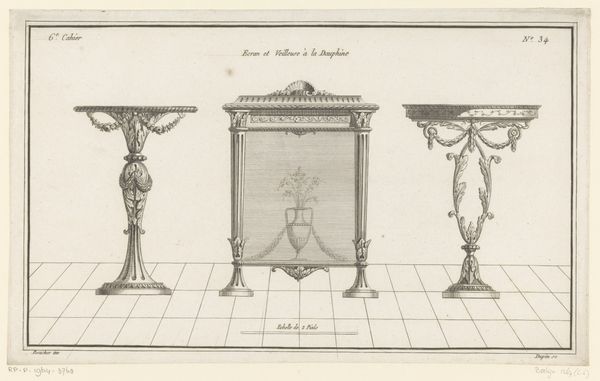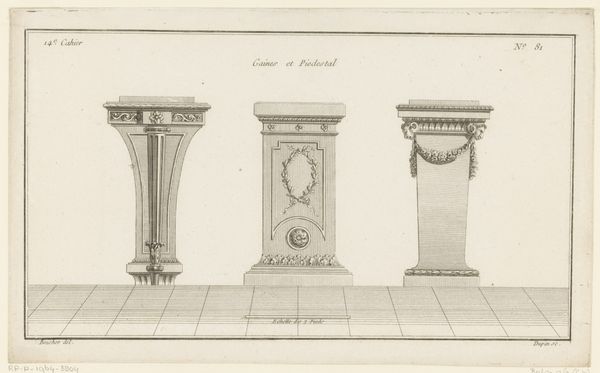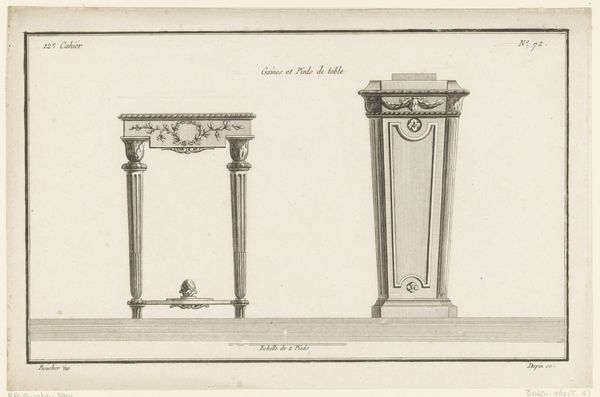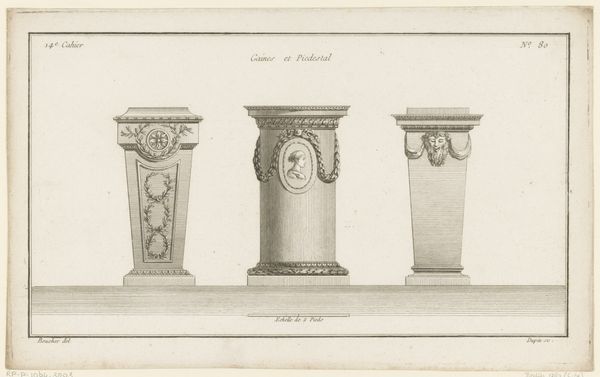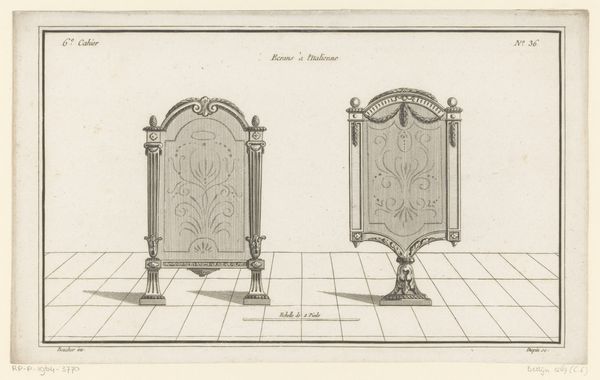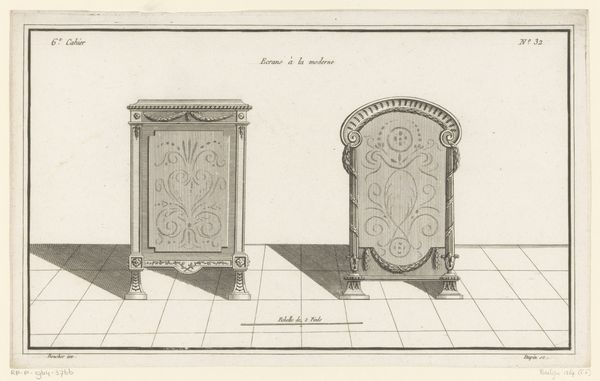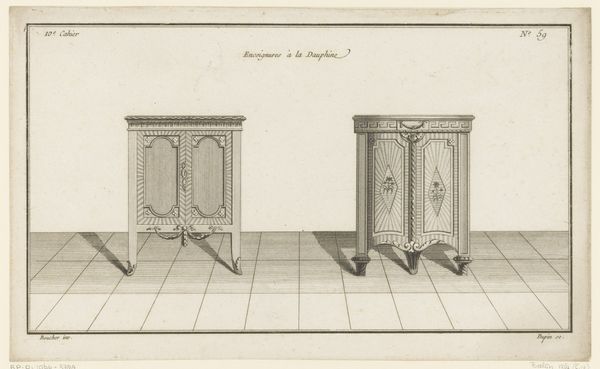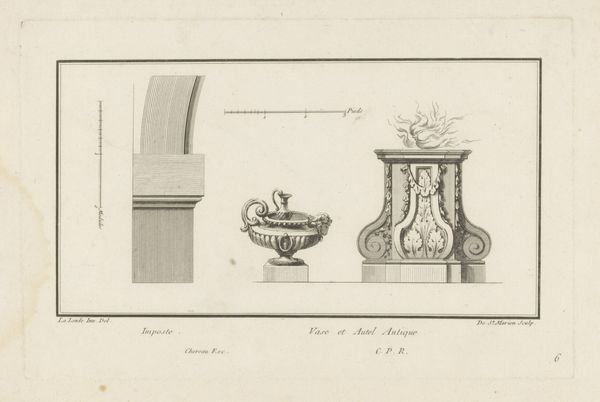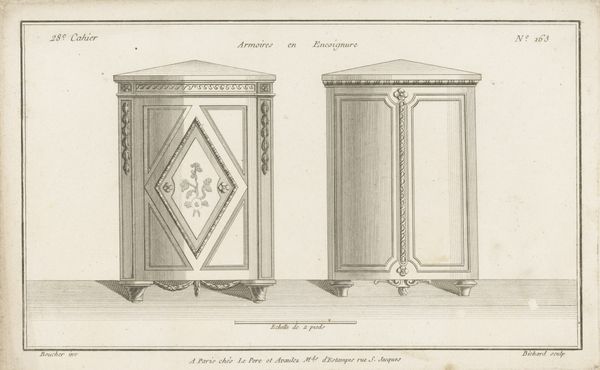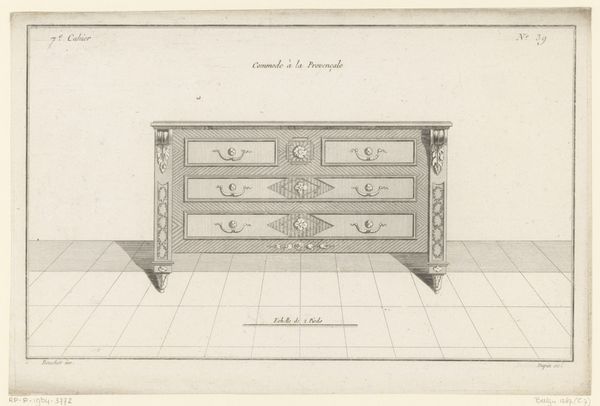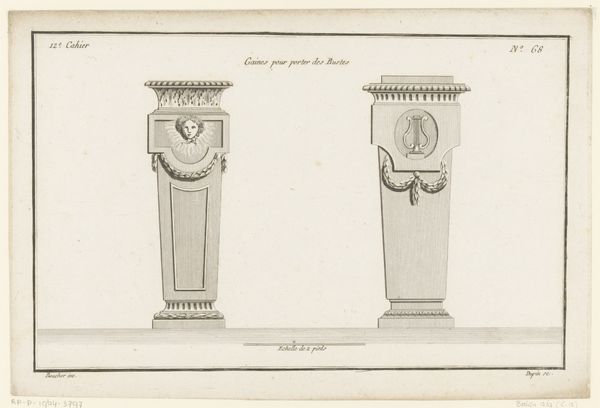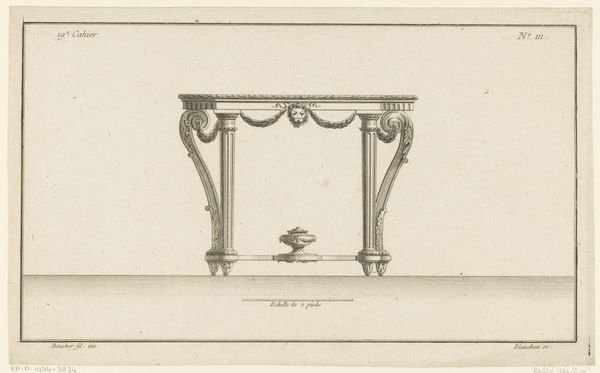
drawing, print, paper, engraving
#
drawing
#
table
#
neoclacissism
# print
#
old engraving style
#
paper
#
decorative-art
#
engraving
Dimensions: height 201 mm, width 328 mm
Copyright: Rijks Museum: Open Domain
Curator: Here we have "Haardscherm en twee bijzettafels," or "Fire Screen and Two Side Tables," an engraving created between 1772 and 1779 by Nicolas Dupin. It's currently held in the collection of the Rijksmuseum. Editor: The composition immediately strikes me as quite austere. It feels almost clinical, like an architectural blueprint rather than an advertisement for these decorative items. There's something cold and rational about the stark presentation. Curator: That coolness, I think, speaks directly to the Neoclassical style and the broader cultural values of the period. Thinkers were striving for order and reason, and this print embodies that spirit. The clean lines, symmetry, and even the almost diagrammatic depiction contribute to that sense of clarity and control. Editor: And consider the context, these aren't simply objects but rather symbols of status and domestic power. The fire screen, for instance, subtly reinforces societal norms around privacy and perhaps even gender roles, while the side tables indicate a space curated for display and refined leisure. Curator: Absolutely. The artist provides this clear presentation of luxury for aspirational consumers in late 18th-century France. You get a glimpse into the social rituals that elevated wealthy members of society above the rest. Notice the careful rendering of ornamentation—leaf motifs and symmetrical details that were highly fashionable at the time. Editor: Looking at the fine detail achieved through the engraving process, I’m wondering about who the print was really intended for? It must have been a reasonably well-off clientele, able to understand, buy into, and further promote the cultural capital these objects offered. Curator: Good point, exactly that: a rising merchant class alongside the aristocracy. This was a world on the cusp of profound change, with social hierarchies ripe for disruption. This artwork offers a snapshot into those final decades, a frozen moment of luxury just before the storm. Editor: Yes, and reflecting on that disruption makes me view the print itself differently now. Knowing what came later adds a layer of pathos, I think, because you see these carefully positioned objects—symbols of stability and wealth—and imagine the turmoil just around the corner.
Comments
No comments
Be the first to comment and join the conversation on the ultimate creative platform.
